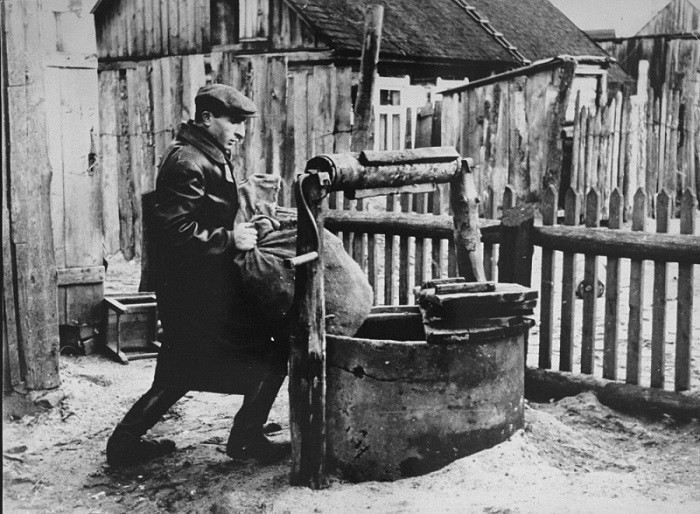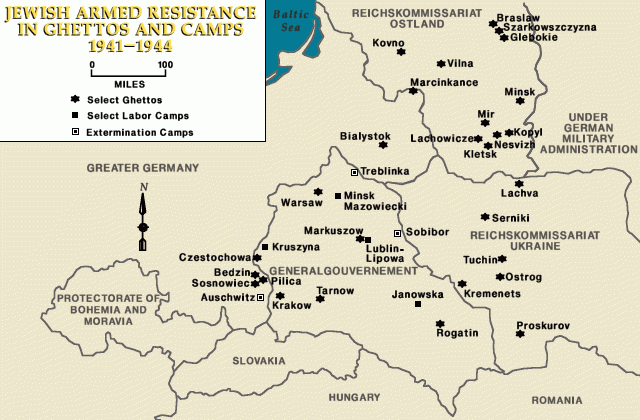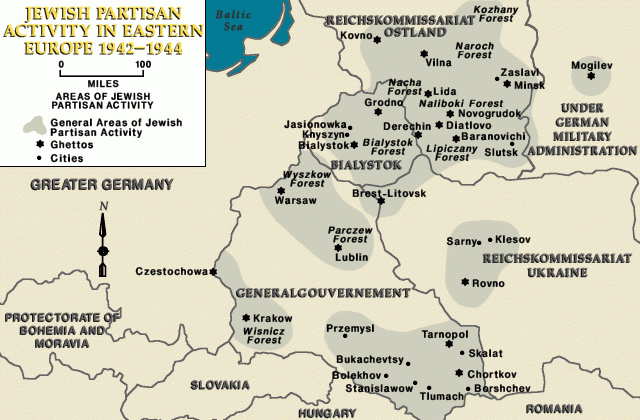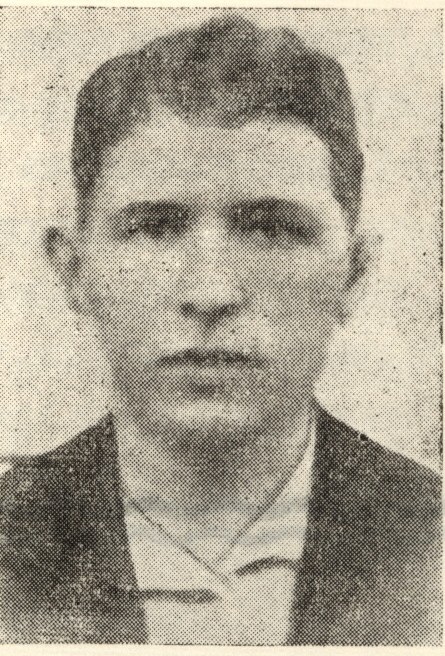
Resistance in the Smaller Ghettos of Eastern Europe
A Project of the Miles Lerman Center
The Warsaw ghetto uprising of April 1943 is often viewed as the classic example of Jewish armed resistance to Nazi oppression during the Holocaust. Indeed, most studies of Jewish resistance have focused on events in the larger ghettos such as Warsaw, Bialystok, Grodno, or Minsk. However, Jews engaged in some form of resistance in many of the ghettos the Germans established.

Jews generally took the option of armed resistance as the last resort, and only after the underground groups in various locations became convinced that the Nazis were bent on the total annihilation of the Jews. It was often clear that fighting against such an overwhelming foe would not mean survival; it would mean a proud death on the Jews’ terms, to be remembered as defenders of the Jewish people. Nonetheless, once the decision was made, Jewish underground groups, both in the ghettos and in the forests, engaged in armed resistance in any way they could.
Diversity of Responses
The Jews confined within smaller ghettos in areas now belonging to Poland, Lithuania, Belarus, Ukraine, and other territories of the former Soviet Union responded to Nazi German discrimination, persecution, and impending annihilation in a variety of different ways. From an early stage, sometimes even before the formation of a ghetto, Jewish youths started to form informal groups, to gather information, collect arms and consider appropriate forms of active resistance. As news was received of the liquidation of entire Jewish communities in neighboring towns, the urgency for taking action became acute.
What were the options open to Jewish resistance movements in the smaller ghettos? While most such groups sought to obtain arms in order to defend themselves, few had any illusions that they could beat the Germans and their collaborators in battle when it came to the liquidation of the ghetto and the murder of its inhabitants. Rather, weapons were primarily a prerequisite for survival outside the ghetto, as many partisan units would not accept Jews unless they brought weapons with them. Armed resistance within the ghettos was viewed mainly as a means to buy time and enable some Jews to escape in the last resort when the entire ghetto faced extinction. A more effective contribution to the defeat of the Germans was to join the partisan struggle in the forests, attacking smaller German detachments by surprise. However, there were a number of practical constraints that tied the hands of the Jewish resistance in implementing their plans.

Obstacles to Resistance
Resistance groups sometimes encountered hostility from the Jewish council (Judenrat) of a ghetto, which feared that the discovery of arms or the flight of Jews to the forest would provoke harsh reprisals from the Germans in accordance with their announced principle of “collective responsibility,” whereby the whole community would be punished for any infractions of German regulations. For example, the Jewish council in Nowogrodek was opposed to Jews escaping from the ghetto; here the Jewish police, which was set up to assist the Jewish council in enforcing compliance with German regulations, reportedly used to hide the shoes of Jews they suspected might flee. In some ghettos the German authorities organized frequent roll calls of the Jews and the members of the Jewish council were made personally accountable if anyone escaped.
A variety of additional factors also constrained the ability of Jews to resist, among them:
- The population of most ghettos was comprised primarily of women, children, and the elderly, such that men of military age formed a very small part of the population of the ghetto, usually less than 30 percent. Concern for the fate of their families discouraged armed resistance, unless there was clearly no alternative.
- The imposition of forced labor and lack of adequate food sapped the physical ability and sometimes the will even of the young to engage in resistance activities.
- Access to arms was very difficult and dangerous to achieve. Even once arms were obtained, there was still the danger of discovery or betrayal even within the ghetto and no way to match the superior armed power of the Germans.
- The secrecy and deception of the deportation actions, in which victims were told to pack belongings for “resettlement in the East” led some Jews to believe that, while resistance meant sure death, cooperation might mean eventual survival. While rumors of death camps were widespread, many chose not to believe that the Nazis could perpetrate something so horrible. There was no precedent for a state-sponsored annihilation of a whole people.
- The German tactic of “collective responsibility,” in which entire families and communities were held responsible for individual acts of armed and unarmed resistance, also served to discourage the organization of resistance.
Armed Uprising
Many of the ghetto inhabitants, including the Jewish council members in the ghetto, were reluctant to support resistance for fear of unnecessarily endangering the entire ghetto population. A compromise that was sometimes reached was for the underground to wait until it was clear that a “liquidation action” was about to take place; then the whole ghetto would resist together in the hope that at least some might flee successfully to the partisans.
This was more or less the scenario in more than ten smaller ghettos. For example, the revolts in places such as Zdzieciol (Zhetel), Lachwa, and Marcinkance resulted in hundreds of Jews escaping to the forest, but such “successful revolts” were generally the exception to the rule. In many places, such as the Volhynian township of Mlynow, plans for resistance could not be effectively implemented on account of unfavorable circumstances.
Hiding, Escapes, and Mass Flight

Contrary to the often-stated view of Jews as unwitting and therefore largely helpless victims, by mid-1942, most ghetto inmates had a strong sense of foreboding about what was to come. The liquidation of the ghettos in the occupied Soviet Union during the “second wave” in the summer and fall of 1942 was sudden and violent, but not unexpected. Resistance most commonly consisted of silent escapes or the attempt to hide behind false walls or in concealed bunkers. An example of the difficult debates that took place within the ghettos can be found in a rare ghetto diary of Lokacze prepared by Michael Diment.
One of the more successful attempts at mass flight was from the Mir ghetto in August 1942. The flight of the Jews from the Lachwa ghetto, while less successful in saving the remaining population, still enabled hundreds to escape the ghetto and try to survive in the forests.
Life in the Forests and Partisan Warfare
The few Jews who did manage to survive escapes from ghettos tried to join existing partisan units, although antisemitism among Soviet, Ukrainian, Belorussian, and Polish partisans often forced Jews to form their own partisan units. Once in the forests, Jews sought to acquire arms to defend themselves from “Jew hunts” conducted by German forces and their accomplices, as well as from hostile local populations who were offered rewards by the Germans for turning in Jews. The story of the Pantelleria battalion near Stanislawow and the Jewish groups in the Parczew forests near Lublin in Poland were but two examples of such efforts to survive and fight while concealed in the forests.
Critical Thinking Questions
- What obstacles and limitations did Jews face when considering resistance? What pressures and motivations may have influenced their decisions and actions?
- Are these factors unique to this history or universal?
- How can societies, communities, and individuals reinforce and strengthen the willingness to stand up for others?

